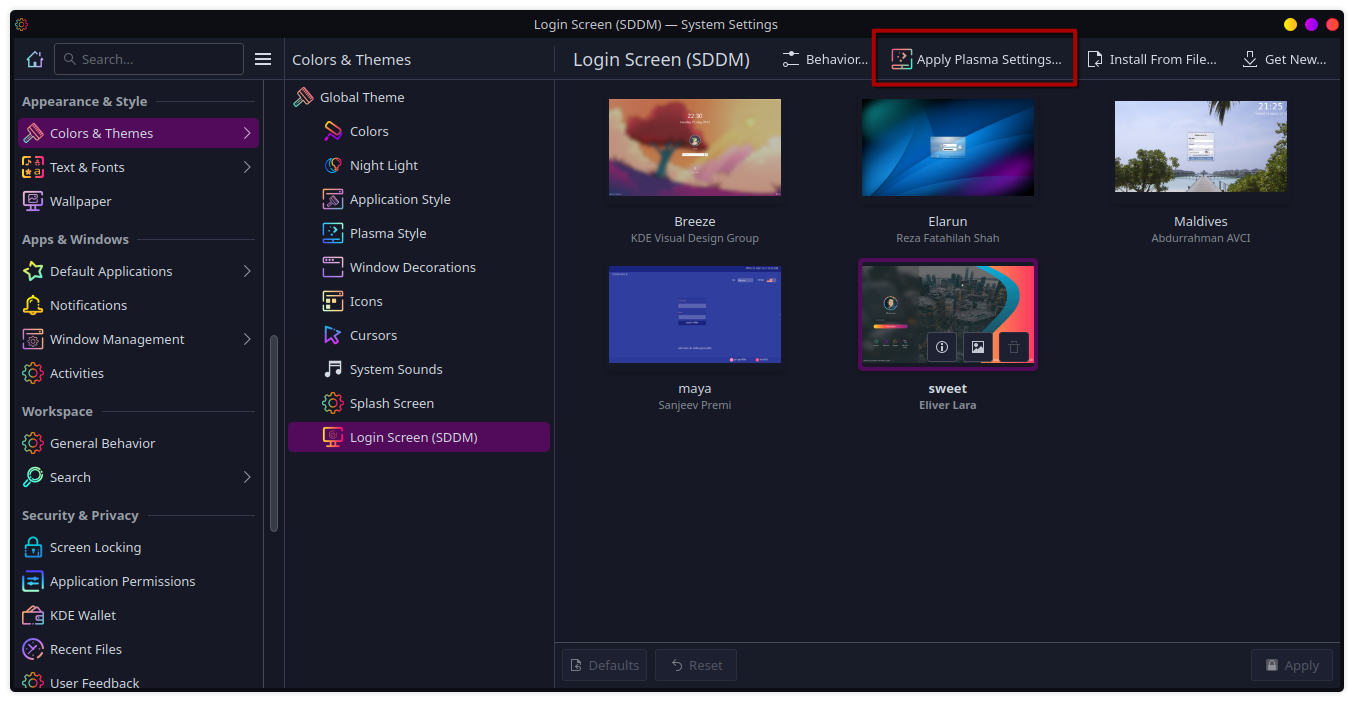Correct. Unfortunately, it's something that each desktop environment or window manager has to implement themselves. But all the button is doing is moving some config files around, so you can probably do some digging to figure out what it's copying to where.
This is the system settings application for the KDE desktop environment.
If you're using Wayland, you can go to Settings -> Colors & Themes -> Login Screen (SDDM) and click "Apply Plasma Settings..."

If you're using X11, it looks like you'll have to resort to hacky scripts, unfortunately.
Source: https://discuss.kde.org/t/how-to-change-monitor-layout-and-orientation-in-sddm/3377
There's a host app that runs on the host machine alongside Sunshine that reads your Steam library, and the Deck plugin adds an icon on each game's banner on your Deck. When you click the icon, the plugin communicates with the host app and then automatically starts a Moonlight/Sunshine session that then starts up the game you were on. You only have to add one "app" to Sunshine and set up the MoonDeckBuddy app on the host, and then you have streaming for your entire library available.
I mean. I can't because I defederated from Threads. But neat, I guess.
I'm not sure where you heard that info about the keys, but it's not right at all. In fact, suyu went the ryujinx way and makes you provide all the keys and the firmware yourself, whereas yuzu only required the keys.
Suyu has done a lot to remove the problematic code and restructure their documentation. It would do well for people criticizing them to first go see what they've done. The suyu devs themselves said that the DMCA request didn't even come from Nintendo, it came from gitlab automatically because they forked a repo that was taken down.
On one hand cool, but on the other, just use Bazzite.
That work has already started with Fediseer. It's not automatic, but it's really easy, which is probably the best we'll get for a while.
The reason this works well for certain applications and not others comes down to programming language / framework and compilation optimization.
If the application was compiled directly into an executable binary and optimized, it can be decompiled, but it won't be human-readable. Programmers would have to delve in and manually trace the code paths to figure out how it works. Fun fact, this is how a lot of the retro game decompilation projects are happening. Teams of volunteers are going through the unreadable decompilations and working together to figure them out.
Dotnet and Java based applications are easier, because they don't usually get directly compiled into machine-executable binaries, and even when they do, it's still easy to decompile them. This is because they're both compiled to an intermediate language that's more optimized than the original, then that IL is run by a runtime. Dotnet's IL is called Common Intermediate Language and Java's is called bytecode. This sounds weird, but it's kinda cool, because it lets people write different languages without having to have a full compiler. They just have to be able to get it compiled to an intermediate language, and then the existing runtime can take it from there.
It's literally right in the middle of the post. It's the part that starts with magnet:?. Copy that whole link, then open your torrent client and add a new torrent via magnet link, then paste the link in.
Was anyone able to do the same for Citra?

I'm one of those weirdos who actually dumps all my own games with my own modded launch Switch mainly for preservation purposes.
But then TotK came out and performed so poorly on the console itself, I exported my save to play on PC and Steam Deck. Every part of my Switch emulation journey has been legal and by-the-book: dumped my own firmware, my own keys, and my own games.
Fuck Nintendo for bullying these developers.